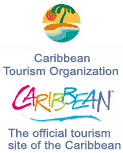The appreciation of sugar cane spirits has grown significantly over the last ten years, but my favorite spirit is just beginning to be noticed on a larger scale. More producers are exporting more sugar cane spirits to more countries and consumers are taking notice of better offerings.
In the middle of the last century, advances in fermentation technology and improvements in distillation fueled a change in the way rum was made in the Caribbean. Today almost every distillery uses stainless steel fermentation tanks and only a few distillers don’t have instruments to monitor the temperature and pressure in their distillation columns or pot stills. Once it was understood that cleaning fermentation tanks after each batch could improve production quality the practice was adopted at nearly every distillery. Today gas chromatography is a standard tool at all of the larger distilleries.
At the end of the last century rum distillers prepared to expand their production to meet the growing demand for their spirits. The price of used whisky and bourbon barrels has soared over the last fifteen years as distillers are putting more fresh spirits in barrels to age and replacing older barrels that were once considered ‘good enough’ to age the rum. Today the standards for aged rum are much higher than they were in the 90s.
Today almost every distiller is either reclaiming their spent yeast and capturing the methane to burn in their boilers or planning to reduce their polluting effluent in the next two years. Waste recovery is no longer considered too expensive, but rather an integral part of sustainable spirits production.
The interest in sugar cane spirits will certainly attract some less than scrupulous entries into the market just as the financial boom attracted more than a few operators who preyed on the less knowledgeable and experienced. As we enter a new decade, the way sugar cane spirits are marketed will see some of the biggest changes in an industry that dates back nearly 400 years in the western hemisphere.
As finances are stretched consumers are keener than ever to learn as much as they can about what they consume before they lay their money down next to the cash register, or, click the ACCEPT button on the electronic payment portal. The internet has changed the way we learn about new products and the way companies get their products noticed. Services like Twitter and Facebook are proving to be invaluable tools to connect with others of similar interest and to learn from others before we spend our hard earned money, which is becoming harder to earn. Electronic media is changing the way we get our news, newspapers are falling faster than politicians moral barometers, but those same electrons are enabling us to learn more about everything from the name of the latest celebrity to fall from grace to a trusted review of the bottle of spirits on the shelf in front of us, all from what we used to call a phone. Not our telephone, we haven’t used them since the last century.
In the next decade we will be able to learn even more about the products we consume, including the sugar cane spirits in our glass, before we click the ACCEPT button. In addition to competitive prices in our purchasing region, which may be a few miles to entire political areas like the EU, we’ll also be able to get real information about things like the carbon footprint of the container and its contents. Reviews by trusted colleagues, many of whom we only know by their screen names but who will become even more influential in the coming years, will be as accessible as the ingredient panels on the food packages we buy.
This won’t be a one way information street. As consumers, we will be able to challenge claims made by the hucksters and marketing companies that today claim no responsibility for their actions and are shielded from consumers by corporate lawyers. Consumers will be given more access to the people who are responsible for manufacturing and marketing the products we consume.
Of course not every producer, marketer or retailer is going to participate in the new age of product transparency. That will be limited to those who want to succeed on the merits of their products.




The next rum book!
January 2nd, 2010I’m not much for New Year’s Resolutions but here’s one I’m going to try my best to live up to. It ’s been more than ten years since I published my last book and I only regret I didn’t have more books to sell from the last printing.
When my boat sunk off Antigua in 2001, I lost about 600 books. By the time I got to Chicago a year later, I discovered that the publisher of The Complete Guide to Rum had sold about 400 books off as remainders and the asking price for those books has gone through the roof.
The Ministry of Rum website has taken a lot of time, but the bulk of that coding work is behind me. Oh, there will be more new features but I’m getting better at writing the code and there is more, and better, error documentation online. Just getting this blog formatted is something that would have taken several weeks to code only a few years ago, but was accomplished while a few football bowl games keep me company.
A lot has happened in the world of sugar cane spirits in the last few years and I’ve been busy collecting more information, discerning more facts and dispelling more lies about my favorite spirit. So without wasting any more time I’m starting the process of writing the next book. The next book won’t have information on every rum in the world, but it will be an attempt to give you as much credible information as I can compile about these spirits and the people who spend their lives making them.
So without wasting any more time, I’m off to compiling the next book. I don’t have a publish date yet but hope to have this completed in the next few months and to keep you updated on the progress here.
Posted in Commentary | Comments Off